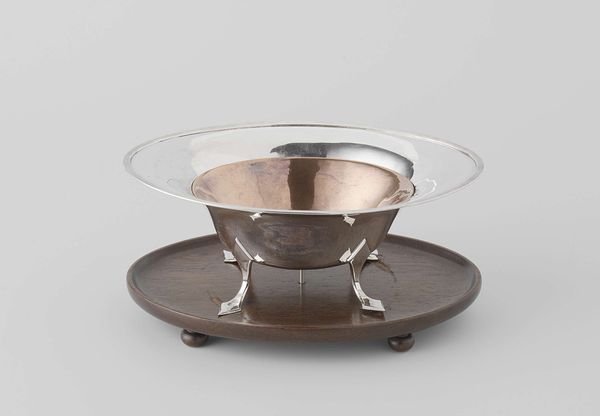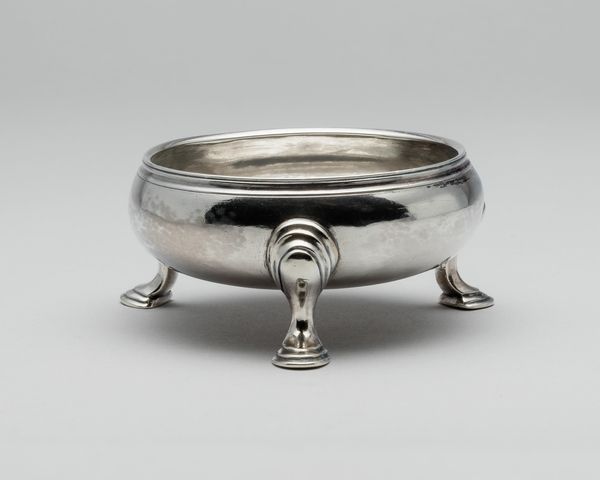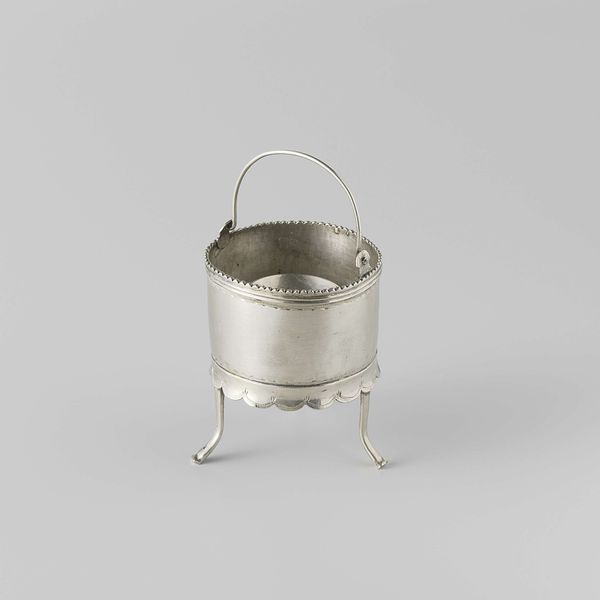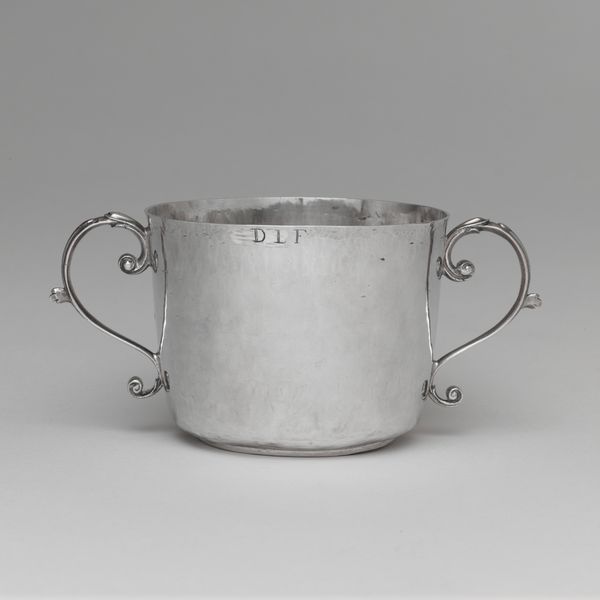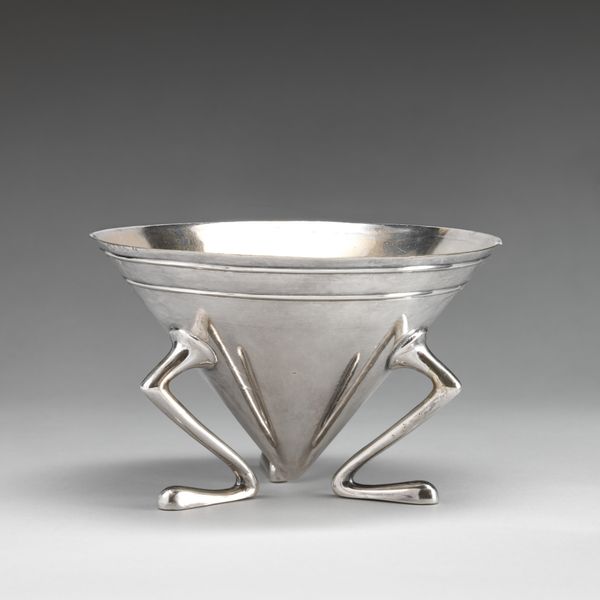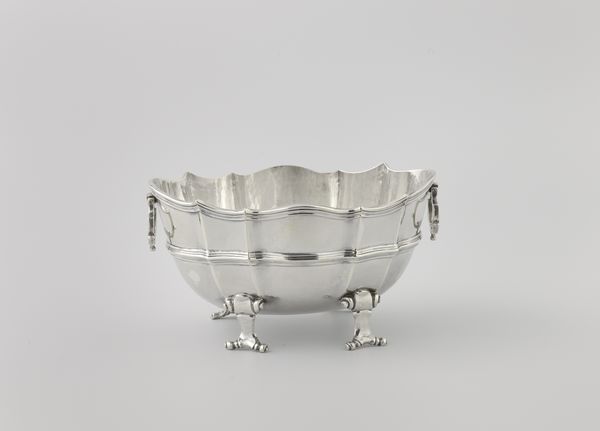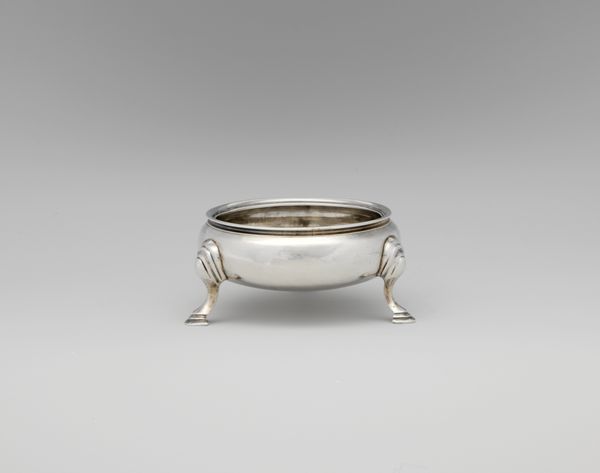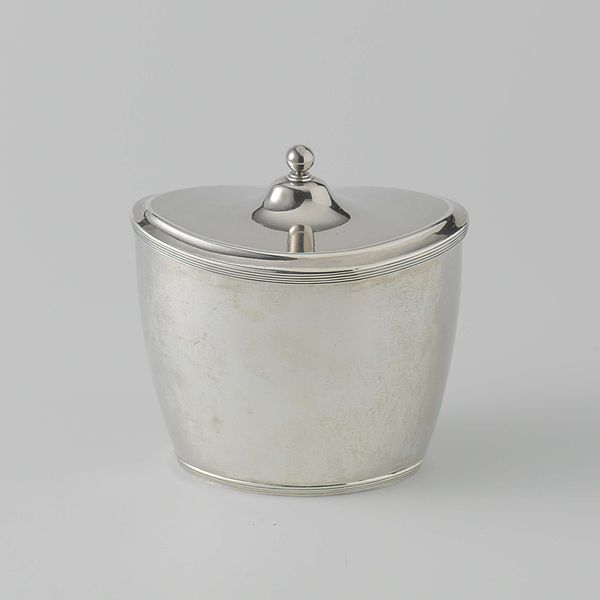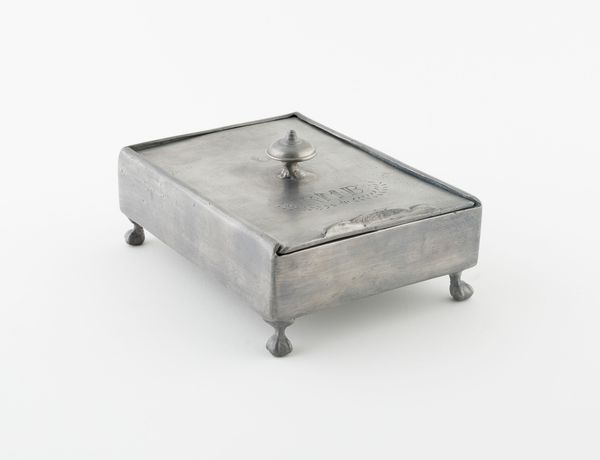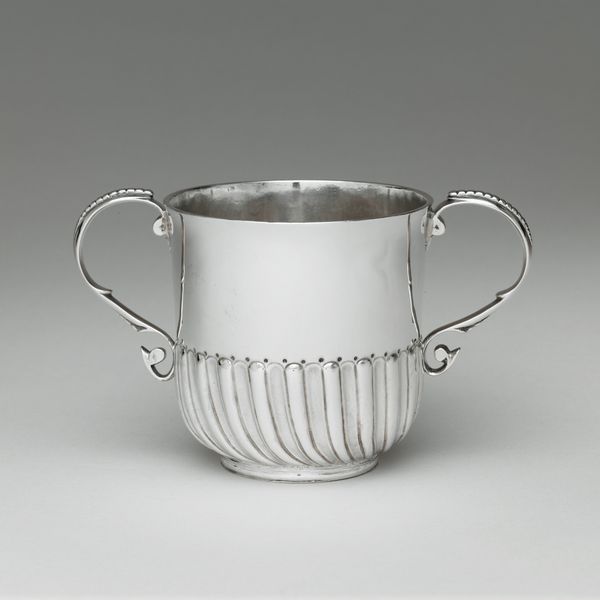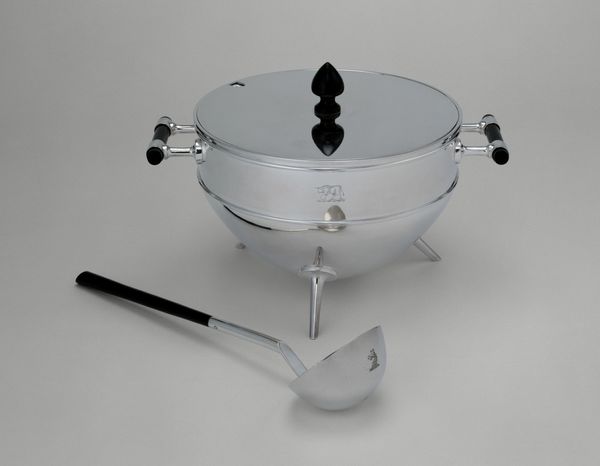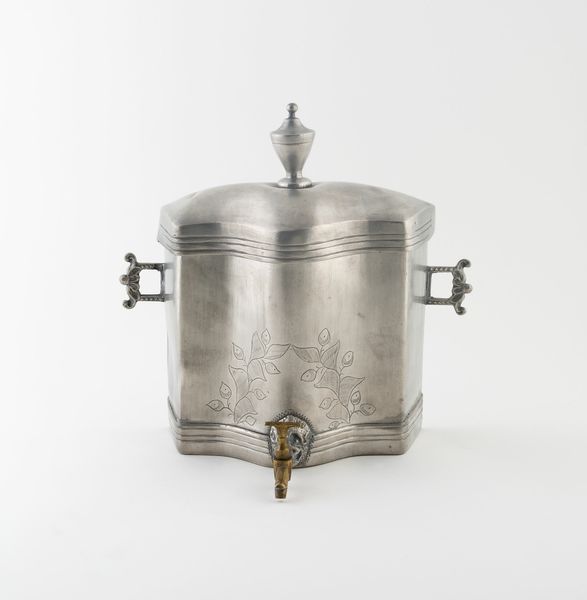
Dimensions: 5 11/16 × 6 1/8 in., 14.108oz. (14.4 × 15.6 cm, 400g)
Copyright: Public Domain
Editor: This striking spoon holder, crafted by Christopher Dresser between 1873 and 1886, uses silver and metal. The juxtaposition of smooth, rounded bowl and angular legs creates a really interesting visual tension, it's oddly charming. What elements stand out to you? Curator: The piece compels us to investigate its geometry, wouldn't you agree? Note the interplay between the cylindrical handle and the hemispherical bowl. The formal rigor is further emphasized by the perpendicular lines forming the legs. The bowl’s smooth reflective surface juxtaposed with the dark handle creates a play of light and shadow that cannot be ignored. Editor: That's a good point; the contrast does make it stand out. What about the "feet" at the base of the legs; do they have any formal significance? Curator: Precisely! They function as stabilizing elements, grounding the otherwise ethereal form. Semiotically, they can be viewed as markers of stability and functionality, subverting pure ornamentation. But consider how their angularity complements the curved form of the bowl, thereby intensifying its perceived roundness. Editor: So, it's about contrasting shapes working together to highlight each other? Curator: Precisely. This dialogue between form and function is central to understanding Dresser’s aesthetic project. Through careful juxtaposition of lines and volumes, Dresser’s spoon holder elevates utilitarian objects into the realm of fine art. What do you make of this shift? Editor: That definitely gives me a new appreciation for what seems like a simple object. Curator: Indeed. By dissecting its visual components, we unravel the complexities hidden beneath its streamlined facade.
Comments
No comments
Be the first to comment and join the conversation on the ultimate creative platform.
